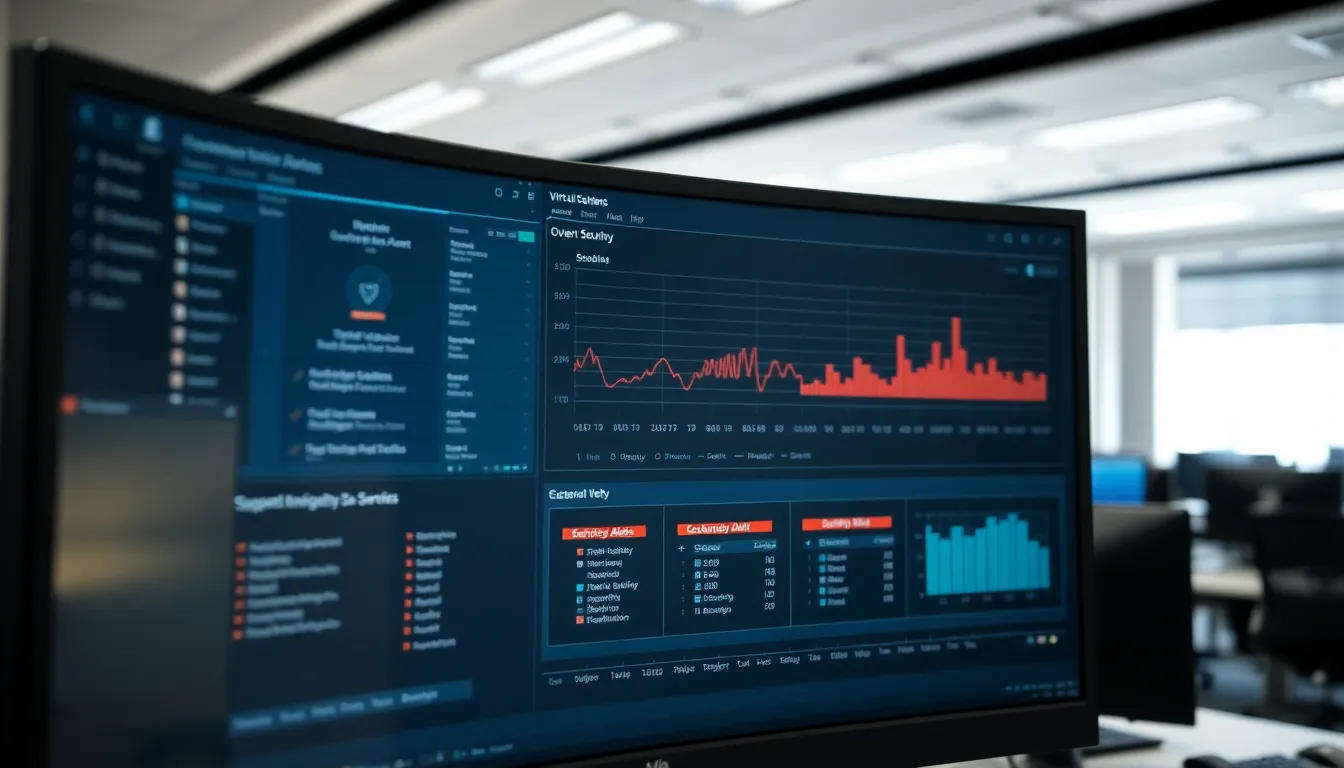Table of Contents
ToggleIn a world where cyber threats lurk around every digital corner, virtual machines have become the superheroes of the IT realm. They save the day by isolating environments and running multiple operating systems on a single physical machine. But just like any superhero, they need a solid security strategy to fend off the villains that threaten their existence.
Virtual machine security isn’t just a buzzword; it’s a critical line of defense against malware, data breaches, and those pesky hackers who think they can waltz in uninvited. With the right measures in place, organizations can protect their virtual assets and keep their data safe. So, whether you’re a seasoned IT pro or a curious newbie, buckle up as we dive into the essential practices that’ll keep your virtual machines secure and your data out of harm’s way.
Overview of Virtual Machine Security
Virtual machine security encompasses the measures and strategies used to protect virtual machines against various cyber threats. Threats like malware attacks, data breaches, and unauthorized access can compromise virtual environments. Each virtual machine operates independently, which underscores the necessity for layered security approaches.
Isolation plays a significant role in maintaining security. Since each virtual machine runs a separate operating system, vulnerabilities in one machine don’t automatically impact others. Implementing strict access controls reduces the risk of unauthorized entry into virtual environments.
Regular updates for hypervisors and guest operating systems contribute to enhanced security. Keeping software current addresses known vulnerabilities and exploits. Additionally, configuring firewalls and antivirus solutions within virtual machines further defends against attacks.
High-priority measures include monitoring network activity and conducting routine security audits. Organizations often employ tools to analyze traffic patterns for unusual behavior, enabling quick detection of potential threats. Incorporating encryption safeguards data within virtual machines.
User awareness training also strengthens virtual machine security. Educating workers about phishing attacks and safe browsing practices promotes a culture of security. Such proactive measures help mitigate human error, which often serves as an entry point for hackers.
Backup strategies for virtual machines represent another cornerstone of effective security. Regularly backing up data ensures recovery in case of incidents like ransomware attacks. These backups must be stored securely and tested periodically to confirm their reliability.
Virtual machine security incorporates a range of practices, making it vital to protect sensitive data and maintain operational integrity. Each organization must tailor its security measures to fit specific needs, ensuring comprehensive protection against emerging threats.
Common Threats to Virtual Machines

Virtual machines face several cyber threats that can compromise their integrity and functionality. Understanding these threats helps in developing effective security measures.
Malware Attacks
Malware attacks target virtual machines through various vectors like malicious software and phishing emails. Attackers exploit vulnerabilities in hypervisors or applications running within the virtual machines. Ransomware can lock data, demanding payment for release. Malware can spread across virtual environments, affecting multiple machines. Implementing antivirus solutions and keeping software updated significantly reduces these risks. Regular scans and proactive monitoring of network activity also bolster defenses against such attacks.
Data Breaches
Data breaches represent a critical threat to virtual machines, exposing sensitive information to unauthorized parties. Cybercriminals often aim for vulnerable virtual machine configurations where access controls are insufficient. Misconfigured settings can facilitate unauthorized data access, leading to significant financial and reputational damage. Employing strong encryption techniques helps protect data at rest and in transit. Furthermore, conducting routine security audits significantly enhances awareness of existing vulnerabilities, prompting timely remediation. Continuous monitoring of user access also mitigates the risk of inadvertent data exposure.
Best Practices for Securing Virtual Machines
Securing virtual machines involves several critical practices. Proper configuration management ensures environments remain secure from the outset.
Configuration Management
Establishing configuration management standards plays a vital role in maintaining security. Each virtual machine should undergo consistent configuration checks, which help identify vulnerabilities. Automated tools can enforce policies and detect anomalies easily. Documentation for configurations must be up to date to provide transparency. Regular reviews of settings reduce the risk of misconfigurations, which often lead to security breaches.
Regular Updates and Patching
Regular updates and patching act as crucial elements in virtual machine security. Keeping hypervisors and guest operating systems current mitigates the risks posed by known vulnerabilities. Scheduled patch management ensures that all systems receive timely updates. Neglecting this practice can expose environments to malware and attacks rapidly. Utilizing automated systems for updates enhances efficiency, ensuring that security measures remain robust and effective.
Tools and Technologies for Enhanced Security
Virtual machines benefit from a variety of tools and technologies designed to enhance their security. Effective implementation of antivirus solutions and robust firewall and intrusion detection systems play vital roles in safeguarding these environments.
Antivirus Solutions
Antivirus solutions offer essential protection for virtual machines against malware threats. These programs actively scan for harmful software, intercepting malware before it can cause damage. It’s important to select solutions that are compatible with virtual environments, as some products may not support multiple instances effectively. Regular updates to antivirus signatures further strengthen defenses against emerging threats. Both real-time scanning and scheduled scans help identify and neutralize potential risks promptly, contributing to a secure virtual infrastructure.
Firewall and Intrusion Detection Systems
Firewalls serve as a frontline defense mechanism for virtual machines, controlling incoming and outgoing network traffic based on security rules. Configuring firewalls correctly ensures that unauthorized access attempts are blocked, protecting sensitive data. Intrusion detection systems (IDS) complement firewalls by monitoring network traffic for suspicious activities and potential breaches. They analyze patterns and generate alerts when anomalies occur, allowing quick responses to potential threats. Together, firewalls and IDS establish a multi-layered security framework that significantly reduces the likelihood of successful cyberattacks on virtual machines.
Virtual machine security is essential for maintaining a safe and efficient IT environment. By implementing robust security measures and staying vigilant against emerging threats, organizations can protect their data and systems from potential breaches. Prioritizing isolation, access controls, and regular updates not only fortifies defenses but also ensures operational integrity.
Investing in comprehensive security strategies, including employee training and routine audits, further enhances resilience against cyber threats. As technology evolves, adapting security practices will be crucial in safeguarding virtual machines. Staying informed and proactive will empower organizations to navigate the complexities of virtual environments with confidence.







